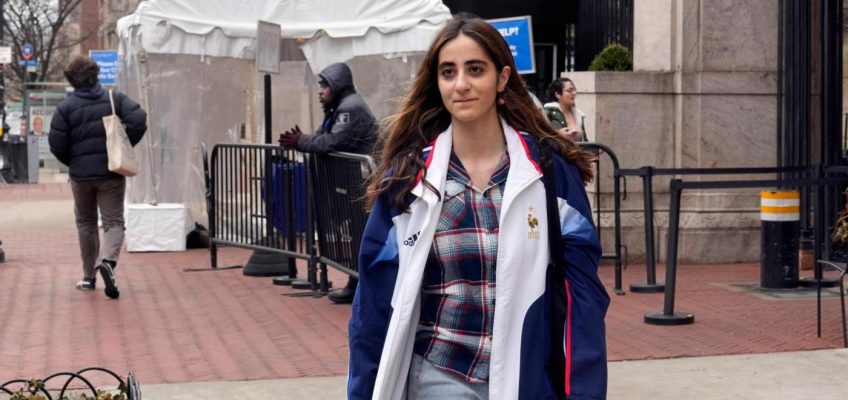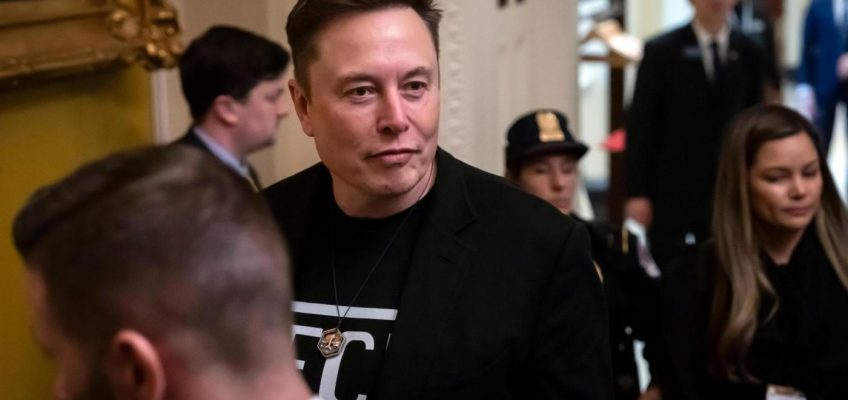By JAKE OFFENHARTZ, Associated Press
NEW YORK (AP) — Columbia University senior Maryam Alwan was visiting family in Jordan over winter break when she received an email from the school accusing her of harassment. Her supposed top offense: writing an op-ed in the student newspaper calling for divestment from Israel.
The probe is part of a flurry of recent cases brought by a new university disciplinary committee — the Office of Institutional Equity — against Columbia students who have expressed criticism of Israel, according to records shared with The Associated Press.
In recent weeks, it has sent notices to dozens of students for activities ranging from sharing social media posts in support of Palestinian people to joining “unauthorized” protests.
One student activist is under investigation for putting up stickers off campus that mimicked “Wanted” posters, bearing the likenesses of university trustees. Another, the president of a campus literary club, faces sanction for co-hosting an art exhibition off campus that focused on last spring’s occupation of a campus building.
In Alwan’s case, investigators said the unsigned op-ed in the Columbia Spectator, which also urged the school to curtail academic ties to Israel, may have subjected other students to “unwelcome conduct” based on their religion, national origin or military service.
“It just felt so dystopian to have something go through rigorous edits, only to be labeled discriminatory because it’s about Palestine,” said Alwan, a Palestinian-American comparative studies major. “It made me not want to write or say anything on the subject anymore.”
The committee informed her that possible sanctions for violating school policy ranged from a simple warning to expulsion.
The new disciplinary office is raising alarm among students, faculty and free speech advocates, who accuse the school of bowing to President Donald Trump’s threats to slash funding to universities and deport campus “agitators.”
“Based on how these cases have proceeded, the university now appears to be responding to governmental pressure to suppress and chill protected speech,” said Amy Greer, an attorney who is advising students accused of discrimination. “It’s operating as a business by protecting its assets ahead of its students, faculty and staff.”
Columbia is under financial pressure
On Monday, federal agencies announced they would consider cutting $51 million in contracts to the school — along with billions more in additional grants — due to its “ongoing inaction in the face of relentless harassment of Jewish students.”
“We are resolute that calling for, promoting, or glorifying violence or terror has no place at our university,” Columbia said in a statement following the announcement.
House Republicans have also launched their own review of Columbia’s disciplinary process. Their most recent letter gave administrators until Feb. 27 to turn over student disciplinary records for nearly a dozen campus incidents, including protests it claimed “promoted terrorism and vilified the U.S. military,” as well as the off-campus art exhibition.
A spokesperson for Columbia declined to specify what, if any, records were turned over to Congress and whether they included the names of students, adding that they could not comment on pending investigations.
The new disciplinary committee was created last summer. According to the university’s updated harassment policy, criticism of another country’s policies could be considered harassment if “directed at or infused with discriminatory comments about persons from, or associated with, that country.” The policy notes that “the use of code words may implicate” it.
Jewish students at Columbia are among those who have received the notices for taking part in pro-Palestinian protests. Other Jewish students have said that rhetoric at protests has crossed into antisemitism and that the administration has been too tolerant of demonstrators who created a hostile environment for people who support Israel.
Disciplinary committee works in secret
Under the office’s policies, students are required to sign a non-disclosure agreement before accessing case materials or speaking with investigators, ensuring the process has remained shrouded in secrecy since it began late last year. Aspect of the committee’s work were first reported this week by the online publication Drop Site News.
Those who have met with investigators say they were asked to name other people involved in pro-Palestinian groups and protests on campus. They said the investigators did not provide clear guidance on whether certain terms — such as “Zionist” or “genocide” — would be considered harassment.
Several students and faculty who spoke with the AP said the committee accused them of participating in demonstrations they did not attend or helping to circulate social media messages they did not post.
Mahmoud Khalil, a graduate student who served as a negotiator for pro-Palestinian protesters during the previous spring’s encampment, said he was accused by the office of misconduct just weeks before his graduation this December. “I have around 13 allegations against me, most of them are social media posts that I had nothing to do with,” he said.
After refusing to sign the non-disclosure agreement, Khalil said the university put a hold on his transcript and threatened to block him from graduating. But when he appealed the decision through a lawyer, they eventually backed down, Khalil said.
“They just want to show Congress and right-wing politicians that they’re doing something, regardless of the stakes for students,” Khalil said. “It’s mainly an office to chill pro-Palestine speech.”
According to some students, the disciplinary push may be reigniting the pro-Palestinian protest movement that roiled campuses last year.
In recent days, students have occupied multiple buildings at Barnard College, an affiliate of Columbia University, to protest the expulsion of two students accused of disrupting an Israeli history class. Several students were arrested following an hourslong takeover of a building Wednesday night.




